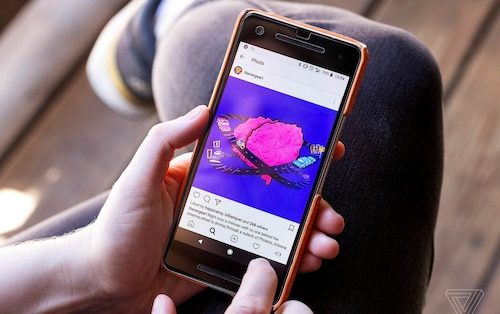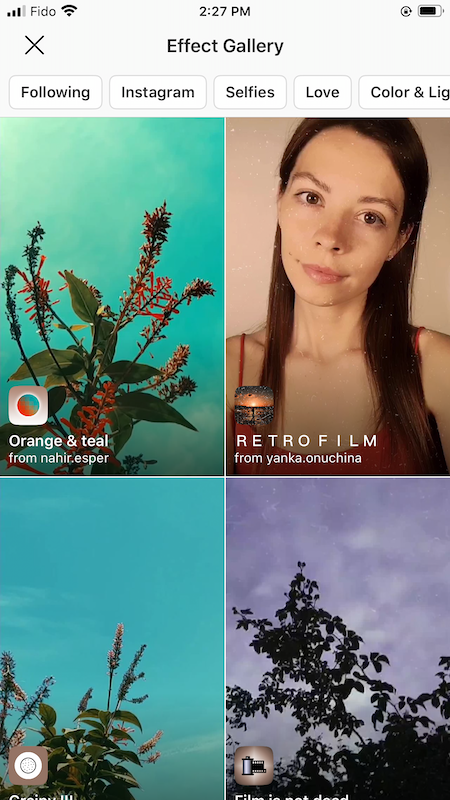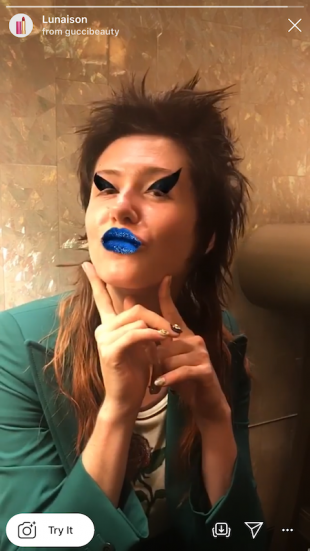In case your brand has Instagram for business, you’re probably already aware that Instagram Stories is an efficient strategy to engage with young customers. In 2019, 500 million accounts used Instagram Stories every day and 67% of all Instagram users are aged 18 to 29. Stories’ interactive features—like polling, questions, and Instagram AR filters—are enjoyable methods for brands to engage these customers. (Unsure how Instagram Stories can build your brand? We’ve got tips to help you use it like a pro.)
Augmented reality (AR) sounds futuristic, however, Instagram Stories has used augmented reality filters since 2017 when it launched its face filters. And recently, Instagram Stories took augmented reality to a brand new level. The Facebook-owned platform Spark AR Studio lets customers create their interactive AR filters. In August 2019, Facebook opened that platform to the public.
Now, anybody can create custom AR filters for Instagram Stories.
Here, learn what Instagram AR filters are, why creating distinctive filters may be right for your brand, and get started with Spark AR Studios.
What’s an Instagram AR filter?
Augmented reality (AR) filters are computer-generated effects layered over the real-life image your digital camera displays. In Instagram Stories, an AR filter alters the image of your entrance or again digital camera shows.
Think of Instagram’s face filters. For instance, the puppy filter superimposes a dog’s ears and nose over the top of your image. These digital effects move with you as you move.
Or its “Hello 2020” filter: 2020 glasses are superimposed onto your face and digital balloons fall down the screen.
Remember that Instagram AR filters are completely different from their preset filters. Instagram’s preset filters elevate the standard of images in one click, so you don’t need to spend a lot of time editing photos for Instagram. In contrast, Instagram AR filters are an interactive factor only for Instagram Stories.
What’s new with Instagram Stories AR filters?
At its F8 conference in May 2019, Facebook introduced that anybody can build custom AR filters using itsSpark AR Studio platform. This new platform allows customers to create unique augmented reality effects for Instagram Stories, Facebook Stories, Messenger, and Portal.
Before Instagram published this platform in August 2019, Instagram invited customers to use Spark AR. That meant only choose Instagram customers may design and publish custom AR filters. Now, anybody who downloads Spark AR Studio can get creative with filters.
It’s simple for Instagram customers to seek out these filters. Anybody visiting your brand’s Instagram profile can click the new face icon. All of the AR filters you create are compiled here.
Click on the new face icon (third icon from left) while visiting a consumer’s profile to see all of the filters they’ve made.
Plus, Instagram customers can discover authentic filters in the new Effect Gallery. However, branded or promotional posts won’t present here.
Authentic AR filters in the Effect Gallery. There are categories like “selfies” and “color and light.”
Why create AR filters for Instagram Stories?
While this device may not be right for all companies, it’s an excellent choice for brands trying to reach younger people on Instagram. Keep in mind: 67% of all Instagram users are aged 18 to 29. Moreover,one-third of the most-viewed Instagram Stories are from businesses.
Here are many examples of how customized AR filters might leverage your brand:
Show off your brand’s character
- Custom AR filters reflect your brand’s tone, particularly if that tone is enjoyable or playful.
- They also often reflect the unique elements of your brand, serving to you stand out from your competitors.
Connect with your viewers
- In 2019, more than 500 million accounts engaged with Instagram Stories daily.
- 60% of companies using Instagram Stories incorporate an interactive element to extend monthly engagement.
- Customized AR filters are the newest interactive element for Instagram Stories.
Be ahead of the curve
- Custom AR filters are still a brand new function, and not every brand is using them yet.
- Create an AR filter for purchasers to “try on” a product before making a purchase or “wear” a branded item of clothing.
- It’s not only for self-promotion. You may also create a filter for your brand to show your support for social causes.
Improve brand awareness
- Incorporate your brand’s logo or mascot into an AR filter.
- In case your unique filter is not promotional, it can display in Instagram’s Effect Gallery the place anybody (together with new followers) can discover it.
When customers share selfies that they use your filter, their followers (and potential new followers) can discover your brand.
When viewing an AR filter for Instagram Stories, there’s a “try it” button on the bottom left-hand side of the screen. Customers can save the filter to use later by pressing the “upload” button. That’s the first button on the bottom right-hand side of the screen.



